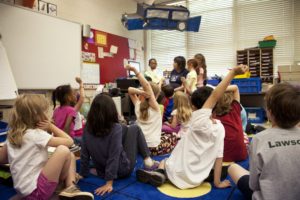There are many amazing opportunities for teachers to work together in order to ensure a strong classroom environment.
Collaboration and team teaching are invaluable approaches in a special education classroom. By working together, educators can leverage their diverse skills and expertise to create a supportive and inclusive learning environment for students with special needs. In this blog post, we will explore three key points on how to successfully collaborate and team teach in a special education classroom, based on the perspective of an elementary school teacher.

Collaboration involves regular communication and coordination between team members. Schedule regular meetings to discuss individual student progress, share observations, and plan lessons together. Utilize technology tools like shared calendars, online platforms, and communication apps to ensure seamless collaboration and information sharing. Remember, open and honest communication is essential to building trust and maintaining a cohesive team.

To create an inclusive learning environment, it is essential to implement a unified approach to instruction. This means that all team members should align their teaching strategies, techniques, and expectations. By doing so, students experience consistent routines and expectations across different settings, which enhances their overall learning experience.
Collaboration enables the sharing of expertise and innovative instructional practices. Capitalize on each team member’s strengths and insights to develop creative lesson plans and teaching methods that cater to diverse learning styles. Regularly reflect on and evaluate the effectiveness of different strategies to ensure continuous improvement and adaptability.
Collaboration extends beyond instructional practices and encompasses the creation of a supportive and inclusive classroom culture. Team teachers can work together to establish clear behavior management systems, promote positive social interactions, and provide emotional support to students. By modeling respectful and inclusive behavior, educators can create an environment where every student feels valued, respected, and supported.
Additionally, collaboration extends to engaging with families and involving them in their child’s education. Regularly communicate with parents or guardians, providing updates on student progress, and seeking their input and insights. Consider organizing parent workshops or information sessions to help families understand the collaborative approach and empower them to support their child’s learning at home.
